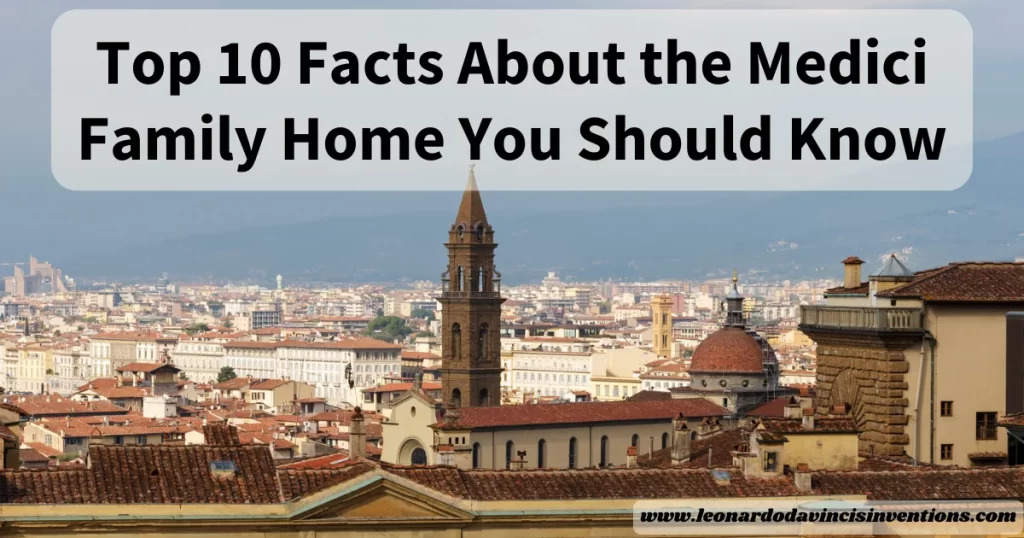
The Medici family home symbolized wealth, power, and art during the Renaissance. Understanding its history can be overwhelming.
This article breaks down the top 10 most interesting facts about where the famous Medici family lived, making it easy to learn key details without confusion.
You will discover how the Medici residences shaped Florence and why their homes remain important to history today.
Whether you are curious about Italian culture or just starting to explore your family history, this post provides simple explanations and valuable insights into the iconic Medici home.
1. Palazzo Medici Riccardi was built in the 1440s for Cosimo de’ Medici.
Palazzo Medici Riccardi is a major landmark in the heart of Florence. In the 1440s, Cosimo de’ Medici, a powerful banking family head, commissioned this historical residence.
He wanted a home that would reflect the wealth and influence of the Medici family in Renaissance Florence. Cosimo chose Michelozzo di Bartolomeo as the architect.
Michelozzo designed the palace to be strong yet understated, adhering to the early Renaissance style. Wide windows, a rusticated stone façade, and an open courtyard became models for later noble homes in the city.
For more on the building’s design, see The Palace—Palazzo Medici Riccardi. To obtain enough space, Cosimo had to buy properties from more than twenty landowners.
The result was a palace that matched both his social status and the ambitions of the Medici dynasty in Italian history. Construction began around 1444 and continued for several decades, with later generations adding subsequent renovations.
Palazzo Medici Riccardi became the center of the Medici family culture and art patronage. It sheltered the Medici family, as well as artists, thinkers, and political guests.
The palace played a pivotal role in disseminating Renaissance art and humanism throughout Florence. Today, it offers a glimpse into the life of the Medici and the culture of Renaissance Florence.
2. The palace is a prime example of Renaissance civil architecture.
The Medici family home, the Palazzo Medici, is a key example of Renaissance civil architecture in Florence. Built in 1444 for Cosimo de’ Medici, the palace set a new standard for wealthy families in the city.
Its design shows a strong sense of balance, symmetry, and proportion, important features of Renaissance architecture. The architect, Michelozzo di Bartolomeo, employed rusticated stone on the lower levels and smooth stone above, resulting in an exterior that is both solid and elegant.
The classic arches and orderly windows highlight the careful planning behind every detail. Inside, the Palazzo Medici impressed both guests and rival families by showing the Medici family’s wealth and power.
The large courtyard, with its graceful columns, provided space for gatherings and showcased their interest in art and learning. Art also played a significant role in shaping the palace’s look and feel.
The Medici family supported painters, sculptors, and scholars, directly connecting their home to the broader Renaissance art and culture movement. The walls and ceilings feature beautiful frescoes and decorations created by skilled artists of the time.
Over the years, the Medici’s influence turned the palace into a symbol of their political power and dedication to patronage of the arts. Even today, visitors to Florence can see how the Palazzo Medici defines Renaissance style and cultural heritage.
3. It features rusticated stone floors and a large cornice roofline.
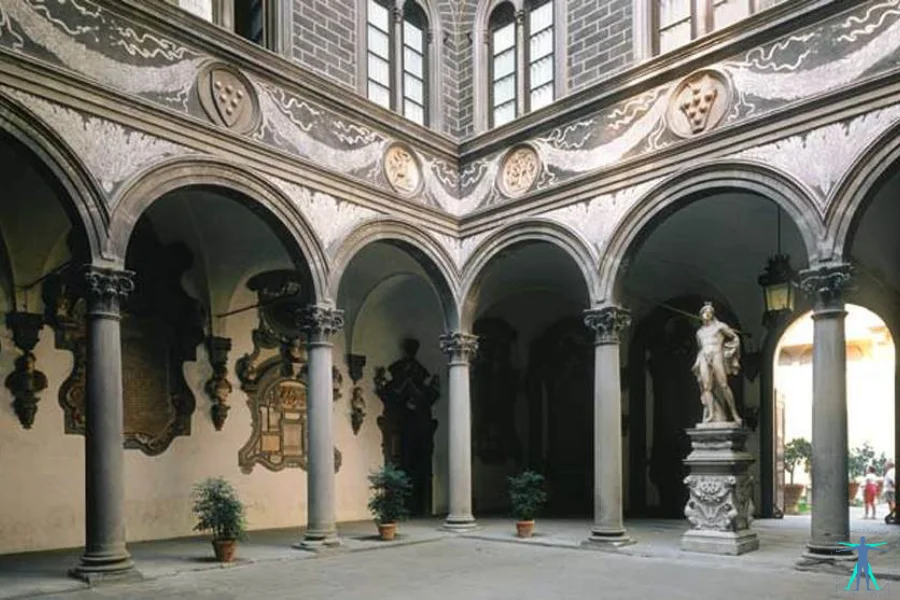
Palazzo Medici, the historic residence of the Medici Family, is known for its impressive architecture in Florence. The building’s lower floors are made of rusticated stone, giving it a strong and solid appearance.
This style conveyed stability, power, and wealth to anyone passing by. Architects designed the rusticated masonry to appear rough and textured, making the lower parts of the palace seem secure.
In Renaissance Florence, families often used this stonework to show their status and influence. The Medici family wanted their home to be admired, so they chose expensive materials and strong designs that would last.
Another critical feature of Palazzo Medici is its large cornice roofline. A cornice is a decorative ledge at the top edge of a building.
At this palace, the massive cornice provides a dramatic finish, helping to separate the structure’s different levels. The rusticated floors and the prominent cornice reflect classic Medici architecture from the Renaissance period.
These features were not just for aesthetic purposes; they also served practical uses, such as protecting the walls from rain. The precise lines and organized shapes fit well with Renaissance ideas about beauty and order.
The exterior details of the Medici Palace contributed to the family’s rise as leaders in art, culture, and politics. These features continue to draw attention from those interested in cultural heritage and Italian history.
The focus on strong materials and elegant details continues to show the Medici family’s lasting impact on Florence’s skyline.
4. The Medici family lived in the Palazzo before moving to Palazzo Vecchio.
In Florence, the Medici family first established their home in the Palazzo Medici on Via Larga, now known as Via Cavour. This impressive building reflected their rising power as a leading banking family and political dynasty in Renaissance Florence.
Cosimo de’ Medici, often called Cosimo the Elder, commissioned the construction of this historic Medici family palace in the 15th century. Skilled workers and renowned architects designed the Medici family home to be strong, elegant, yet understated, fitting the family’s style and reputation.
The palazzo served as a stage for the Medici family’s political activities and gatherings. Here, the family hosted important guests, held meetings about city affairs, and displayed their famous patronage of the arts.
The building’s rooms featured Renaissance art, Medici portraits, and grand decorations. In 1540, the Medici family moved from the Palazzo Medici to the larger and more strategic Palazzo Vecchio.
Palazzo Vecchio became the center of Medici rule and the seat of government in Florence. This move marked another step in their rise as a force in Italian history and the cultural heritage of Renaissance Florence.
5. The Pitti Palace was another Medici residence in Florence.
The Pitti Palace is one of the most famous homes of the Medici family in Florence. Located on the south side of the Arno River, this grand building was originally the residence of a wealthy banker, Luca Pitti.
The Medici family purchased the Pitti Palace in 1549 and quickly made it their primary residence. As a key palace, it symbolized their vast wealth and political power.
The palace housed impressive art collections with Renaissance art, jewelry, and luxurious furnishings. Many important Medici portraits and works from the family’s era remain displayed there today.
During the Medici rule, the palace was not just a home but a center for Florence’s cultural heritage. It served as the stage for significant events and gatherings, making it an important part of Italian history.
The Medici also expanded the palace and created the famous Boboli Gardens behind it, showing their influence on Renaissance architecture and garden design. Several generations of the Medici dynasty resided in the Pitti Palace, further solidifying its role in Florentine power and the Medici family’s history.
Today, visitors to Florence can experience the splendor of this historical residence, tour its museums and gardens, and learn more about the Medici legacy.
6. The family crossed the Arno River to commute between Pitti Palace and the Uffizi.
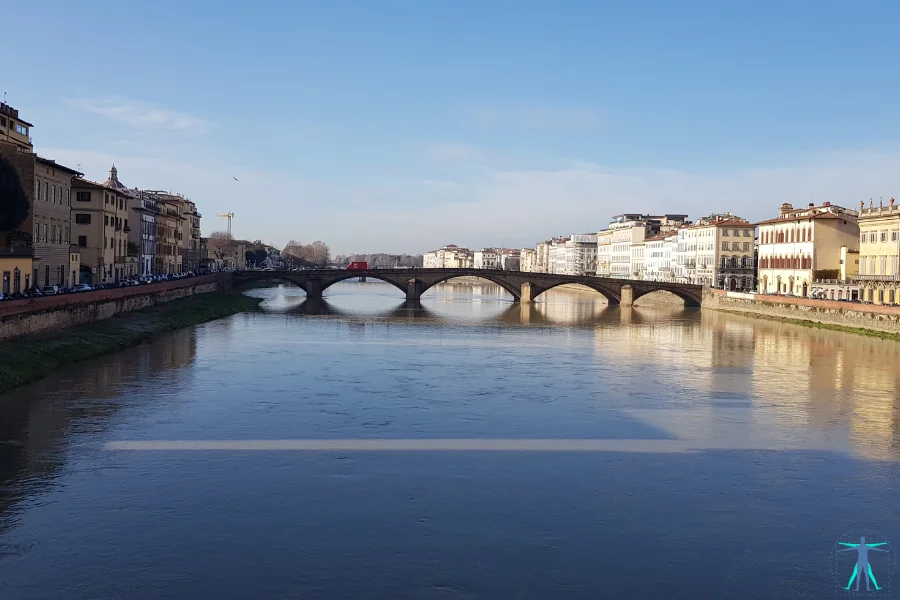
The Medici Family made strategic moves in Renaissance Florence to show their power. One of their most practical achievements was creating a safe passage across the Arno River.
This passage allowed them to travel between their home at the Pitti Palace and their offices at the Uffizi. In the 16th century, the Medici family built the Vasari Corridor to facilitate this commute.
The Vasari Corridor is an enclosed walkway. It offered privacy and protection from the public as the family moved between key buildings.
The corridor crossed the Ponte Vecchio bridge, which still stands today. It linked the Pitti Palace, the Medici family’s primary residence, with the government center at the Uffizi.
This route helped the political dynasty of the Medici family govern the city more smoothly. The Medici’s use of architecture for safety and convenience shaped the urban landscape.
Today, visitors can follow in their footsteps and experience the Medici legacy firsthand. The Vasari Corridor illustrates how the Medici family seamlessly integrated art, politics, and power into their lives.
It is a unique example of Medici’s influence on city planning and architectural innovation.
7. Palazzo Medici Riccardi was designed by architect Michelozzo.
Palazzo Medici Riccardi is an essential part of Renaissance Florence. The Medici Family chose architect Michelozzo di Bartolomeo to design their grand home.
Cosimo de’ Medici, the head of the family, hired Michelozzo in the mid-15th century for this project. Michelozzo’s design marked a new era for Renaissance architecture.
He combined classic styles with local Florentine traditions. The building’s strong, balanced look reflects the wealth and influence of the Medici family.
Michelozzo used rusticated stone on the walls, including a prominent cornice along the roof. This feature became a symbol of Renaissance architecture in Florence.
The palace stands out for its arched windows and sturdy, geometric shape. These touches set the standard for later private homes in Italy.
Michelozzo planned the structure to be both private and impressive. He included a large courtyard, giving the palace a fortress-like appearance as it faced the street.
This residence became a center of art patronage and Medici family life. The Medici Palace was not just a home but a statement of the family’s place in society.
During the Renaissance, it helped set the tone for displaying Florentine power and humanism in art and culture. The building’s design continues to attract visitors interested in Medici architecture and the roots of Renaissance art.
8. The Medici homes were central to their political and banking power.
The Medici Family made their homes key centers of both business and politics in Renaissance Florence. These historical residences, including the famous Palazzo Medici, became symbols of their wealth and influence.
The Medici homes impressed rivals and showed strength. Important guests, like foreign ambassadors and local leaders, visited these grand palaces.
Here, the Medici dynasty hosted meetings and celebrations that helped them build their power. Inside these palaces, the family managed the Medici Bank, one of the most successful banks in Europe at the time.
They stored financial documents and treasures that proved their success as a banking family. Artworks filled the Medici family homes.
Medici portraits, sculptures, and frescoes decorated their walls, showing their dedication to Renaissance art. Their patronage of the arts was a tool for winning respect and loyalty.
These buildings were more than personal residences. They acted as nerve centers for the Medici family’s wealth, political strategy, and cultural projects.
The homes also stored crucial records in the Grand Ducal Archive. This helped the family control their vast network across Florence.
Architecture played a significant role in expressing the power of the Medici family. The style of the Medici Palace influenced building design in Florence and across Europe.
Today, these palaces remain a part of Italy’s cultural heritage. They offer insight into the Medici rule during the Renaissance.
9. The family residence was a cultural hub during the Renaissance.
The Medici Family home, known as the Palazzo Medici, stood at the heart of Renaissance Florence. During the 15th and 16th centuries, this residence became a center for art, learning, and social gatherings.
Artists, thinkers, and politicians often visited the Palazzo Medici. Famous figures like Michelangelo, Leonardo da Vinci, and Botticelli spent time there under the family’s patronage.
These visits helped support the development of Renaissance art and culture across Europe. The Medici dynasty utilized its wealth and political influence to acquire artwork and support new projects.
The Medici family gathered ancient sculptures and rare books, which filled their home and inspired many guests. The palace’s walls displayed frescoes and portraits that told stories of Florentine power and Medici influence.
Cosimo de’ Medici, the head of the banking family, invited scholars to discuss new ideas about science and humanism. He wanted the family residence to show their commitment to intellectual and cultural growth in Italian history.
The Medici Palace’s architectural design also set new trends in Florence. Its extensive gardens, grand halls, and detailed decorations made the home a model for future residences.
Medici architecture combined beauty and innovation. It shaped both the city and the era.
Thanks to their patronage of the arts, the Medici family home left a lasting mark on European cultural heritage. Today, many take Medici family home tours to see this vital piece of Renaissance Florence in person.
10. The Palazzo contains classical arched windows arranged along its facade.
The Palazzo Medici stands out in the center of Florence because of its classical arched windows, which line the building’s main facade and are easy to spot from the street.
Each window has a rounded top, a characteristic of Renaissance architecture. This use of arched windows started a trend that many other buildings in Renaissance Florence followed.
The design helped the Medici Palace become a model for other homes of wealthy families. The windows contribute to the building’s famous balanced and harmonious look.
Cosimo de’ Medici, who commissioned the palace, wanted the home to look impressive but not too flashy. The windows give the palace an open feeling while still looking strong and secure.
They let in natural light, necessary for art collections and daily life. When people take Medici family home tours, they often notice these elegant arched windows first.
The windows exemplify how art, style, and function came together in one historic residence. The rounded arches are also visible in paintings and drawings from that time.
The windows contributed to the Medici family’s reputation for arts patronage. Light streaming through helped make the palace’s art and frescoes stand out, bringing attention to the Medici family’s taste and support for artists.
The arched windows remain a key part of the Medici legacy in Italian history.
Frequently Asked Questions
The Medici family left a mark on Florence with impressive homes and massive wealth. Many of their buildings and traditions have survived for centuries.
Their financial and social legacy still shapes the city today.
Where is the Medici family house?
The main Medici family home is the Palazzo Medici Riccardi, located in the center of Florence, Italy. It is located on Via Cavour, a major thoroughfare in the city.
Today, the palace is a museum that visitors can tour.
Is the House of Medici still around?
The original Medici family line ended in the 1700s. No living descendants are belonging to the main branch of the family.
As a political and banking power, the family is no longer active in Europe.
What did the Medici family live?
The family lived in several large palaces, including the Palazzo Medici Riccardi and the Pitti Palace in Florence. They also resided in the historic Palazzo Vecchio during their time in power.
Is the Medici home still standing?
Yes, the Palazzo Medici Riccardi still stands in Florence. It has been restored and serves as a public building and museum.
Other Medici houses, like the Pitti Palace, can also be visited.
Does the Medici Bank still exist?
The Medici Bank closed in the late 1400s due to financial troubles. It does not exist anymore.
The banking laws and practices they started still influence modern finance.
Where did the Medici wealth go?
Much of the Medici family’s wealth was spent on art, buildings, and political influence. After their bank collapsed and the last family members died, their fortune was absorbed by the state, and through marriages with other European families.
Who was the wealthiest family in Florence?
During the Renaissance, the Medici family was Florence’s richest and most powerful family. Their banking business and political roles made them wealthy and influential throughout Europe.
Where is the Medici family mausoleum located?
The Medici family mausoleum is in the Basilica di San Lorenzo in Florence. The Medici Chapels are a renowned feature of this church and house the tombs of many family members.
How much wealth did the Medici family possess?
Exact amounts are difficult to determine. At its height, the Medici bank was the most powerful in Europe.
Their assets were worth millions of today’s dollars, but no official total survives.
Did the Medici family live in Palazzo Vecchio?
The Medici family lived in Palazzo Vecchio after they became rulers of Florence.
They later moved to the Pitti Palace, making it their primary residence.
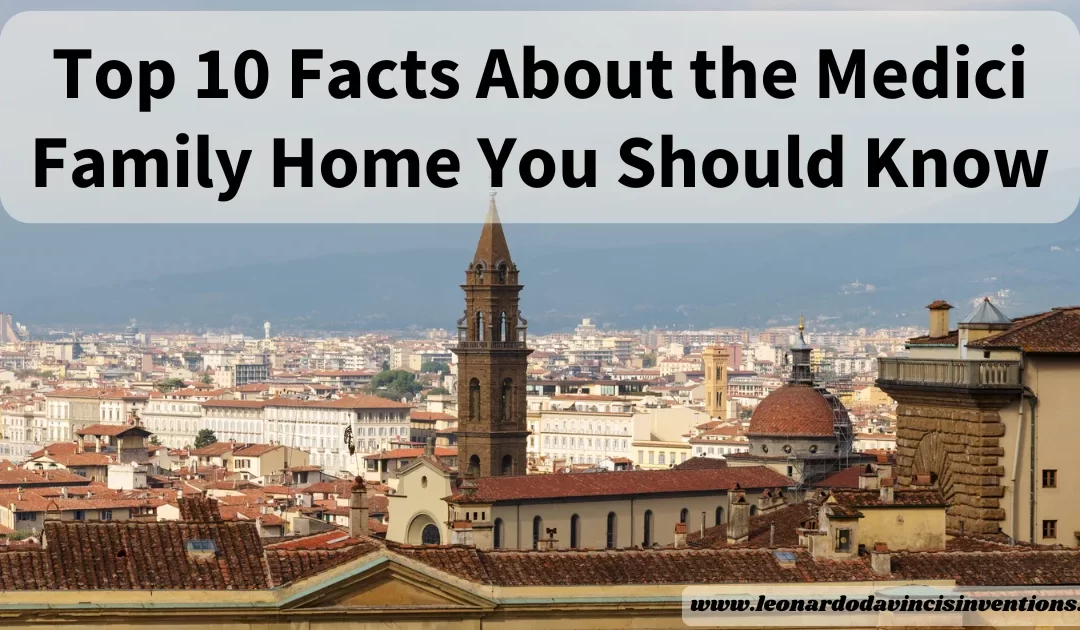
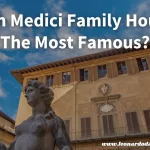


 Leonardo Bianchi,
the creator of Leonardo da Vinci's Inventions.
Thank you for visiting
Leonardo Bianchi,
the creator of Leonardo da Vinci's Inventions.
Thank you for visiting